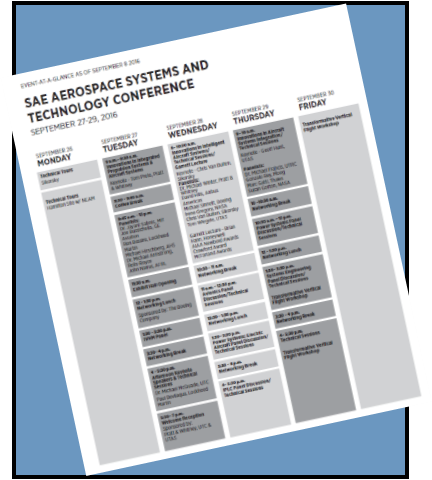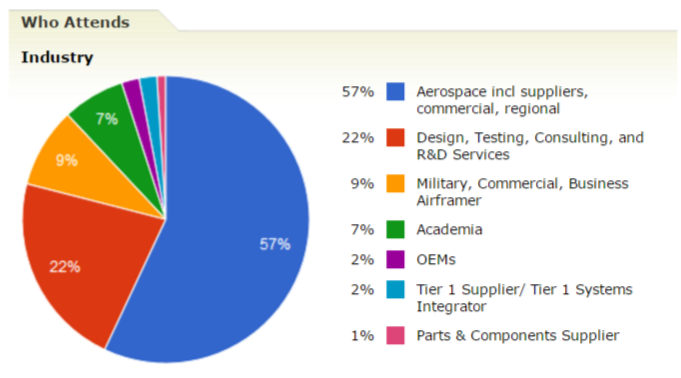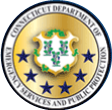CT's Strength in Aerospace, Engineering on Display at Upcoming Conference in Hartford
/The three-day conference at the Connecticut Convention Center at the end of this month begins with technical tours of Sikorsky and UTC Aerospace Systems to provide industry experts with a first-hand look at their industry-leading innovations.
It is the opening of what organizers describe as a conference “unlike other aerospace and defense events,” focusing on the “practical application and implementation of technology, and technology in development in commercial, military and general aviation -essential for the aerospace technical community, government, and research personnel.”
The SAE 2016 Aerospace Systems and Technology Conference (ASTC) is to be held September 27-30. SAE International is a global association of more than 128,000 engineers and related technical experts in the aerospace, automotive and commercial-vehicle industries. The conference “combines the strength of the SAE Power Systems Conference (PSC), Aerospace Electronics and Avionics Systems Conference (AEAS) with tracks in unmanned systems and systems engineering. No other event provides the breadth and depth of technical presentations across these domains,” organizers stress.
 Keynote speakers include Thomas W. Prete, Vice President of Engineering for Pratt & Whitney, Michael McQuade, Senior Vice President, Science and Technology, for United Technologies, Chris Van Buiten, Vice President of Sikorsky Innovations at Sikorsky Aircraft, and Peter Smith, Vice President, Engineering, at UTC Aerospace Systems.
Keynote speakers include Thomas W. Prete, Vice President of Engineering for Pratt & Whitney, Michael McQuade, Senior Vice President, Science and Technology, for United Technologies, Chris Van Buiten, Vice President of Sikorsky Innovations at Sikorsky Aircraft, and Peter Smith, Vice President, Engineering, at UTC Aerospace Systems.
The conference will offer an open technical forum for aerospace systems professionals, especially engineers working in a range of disciplines to gather valuable technical knowledge, insight, and information on emerging and applied technologies with respect to commercial, military, and unmanned aviation.
The technical sessions, developed by industry professionals to maximize relevance, are designed to allow industry members of all levels the opportunity to gather timely, relevant, and stimulating information to enhance skills and creativity
 Overall, the event provides an invaluable opportunity for attendees to renew and develop important business relationships within the international aerospace industry and for engineering professionals to discover, collaborate, and engage with peers from around the globe. Attendees will interact directly with the event organizers and technical leaders from Boeing, Airbus, GE, NASA, U.S. Air Force, Honeywell, Pratt & Whitney/UTAS, Rolls-Royce, Sikorsky, and many others.
Overall, the event provides an invaluable opportunity for attendees to renew and develop important business relationships within the international aerospace industry and for engineering professionals to discover, collaborate, and engage with peers from around the globe. Attendees will interact directly with the event organizers and technical leaders from Boeing, Airbus, GE, NASA, U.S. Air Force, Honeywell, Pratt & Whitney/UTAS, Rolls-Royce, Sikorsky, and many others.
The conference concludes on Sept. 30 with a day-long Transformative Vertical Flight Workshop.
Panels at the Hartford conference will bring industry experts together to discuss critical issues regarding the integration and application of technologies relevant to the solving emerging issues in the engineering and maintenance communities. The goal of the panels is to enhance the technical understanding of items critical to those participating in the audience via problem solving discussions and exchange of ideas. Topics will include innovations in Integrated Propulsion Systems & Aircraft Systems, Intelligent Aircraft Systems and Aircraft Systems Integration.



 As the state's principal educational technology advisor, the website explains, “the Commission works to ensure the effective and equitable use of resources, without duplication, and engender cooperation and collaboration in creating and maintaining technology-based tools for use by all the people of Connecticut.”
As the state's principal educational technology advisor, the website explains, “the Commission works to ensure the effective and equitable use of resources, without duplication, and engender cooperation and collaboration in creating and maintaining technology-based tools for use by all the people of Connecticut.” Wallingford-based
Wallingford-based 
 Also reaching the Inc. 5000 were
Also reaching the Inc. 5000 were  Votto Vines is a family-operated business focusing primarily on the importation and wholesale distribution of fine wines produced by leading boutique vineyards around the world as well as high-profile private label and wine licensing transactions.
Votto Vines is a family-operated business focusing primarily on the importation and wholesale distribution of fine wines produced by leading boutique vineyards around the world as well as high-profile private label and wine licensing transactions. e company has an office in Boston.
e company has an office in Boston.




 The New Haven Register
The New Haven Register 



 Just over three years ago, NBC Sports launched a new state-of-the-art 300,000 square foot facility headquartered in Stamford, on a thirty-three acre campus (formerly the home of Clairol). The facility brought NBC Sports, NBC Sports Network, NBC Olympics, NBC Sports Digital, and NBC Regional Networks all under one roof. Connecticut’s First Five program, providing financial incentives to major business entities to relocate to the state, helped get the deal done. At the ribbon cutting for the facility in July 2013, just off exit 9 along I-95, NBC Sports Group Chairman Mark Lazarus said it was “built for every conceivable media platform, known today or yet to be built or conceived.”
Just over three years ago, NBC Sports launched a new state-of-the-art 300,000 square foot facility headquartered in Stamford, on a thirty-three acre campus (formerly the home of Clairol). The facility brought NBC Sports, NBC Sports Network, NBC Olympics, NBC Sports Digital, and NBC Regional Networks all under one roof. Connecticut’s First Five program, providing financial incentives to major business entities to relocate to the state, helped get the deal done. At the ribbon cutting for the facility in July 2013, just off exit 9 along I-95, NBC Sports Group Chairman Mark Lazarus said it was “built for every conceivable media platform, known today or yet to be built or conceived.”

 iveness of social media. In addition, ratings from the Opening Ceremonies on NBC television were down substantially from the London Games. But that seems to have been the floor, not the ceiling, for viewership levels.
iveness of social media. In addition, ratings from the Opening Ceremonies on NBC television were down substantially from the London Games. But that seems to have been the floor, not the ceiling, for viewership levels.

 The entire statewide system in Connecticut, purchased through A&T, cost $13.26 million with annual maintenance costs of about $3.2 million, Stephen Verbil, a telecommunications manager with the Division of the Statewide Emergency Communications,
The entire statewide system in Connecticut, purchased through A&T, cost $13.26 million with annual maintenance costs of about $3.2 million, Stephen Verbil, a telecommunications manager with the Division of the Statewide Emergency Communications,  The same measure showed the age 20-34 demographic group, at 0.22 percent, was considerably below the rate for other age groups. (This rate means that 221 out of every 100,000 adults in this age group became entrepreneurs in a given month.) The data also indicates that the rate of new entrepreneurs for the age 20-34 group is down from the high point for this age group of 0.28 percent in 1996.
The same measure showed the age 20-34 demographic group, at 0.22 percent, was considerably below the rate for other age groups. (This rate means that 221 out of every 100,000 adults in this age group became entrepreneurs in a given month.) The data also indicates that the rate of new entrepreneurs for the age 20-34 group is down from the high point for this age group of 0.28 percent in 1996.































